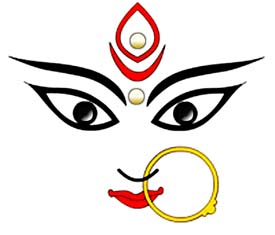Dec 21, 2025
Dec 21, 2025
 Today is Panchami, another day and the long awaited festivities begin. As Kolkata, my beloved city, gears up all adorned for the worship of Durga, Goddess, Mother, Mother-Goddess or simply a divine daughter, the complexities of the relationships of the Bengalis with Durga crowd the mind. The greatest festival for the Bengalis world over, the five days of Durga puja are awaited the whole year by all and sundry. More than religious, it is social and cultural in its flavour and as such rather secular in its feel. But this is not the only aspect of difference that the autumnal festival of the Bengalis shares with its pan Indian counterparts like Navaratri. But the iconography of Durga in Bengal differs vastly too.
Today is Panchami, another day and the long awaited festivities begin. As Kolkata, my beloved city, gears up all adorned for the worship of Durga, Goddess, Mother, Mother-Goddess or simply a divine daughter, the complexities of the relationships of the Bengalis with Durga crowd the mind. The greatest festival for the Bengalis world over, the five days of Durga puja are awaited the whole year by all and sundry. More than religious, it is social and cultural in its flavour and as such rather secular in its feel. But this is not the only aspect of difference that the autumnal festival of the Bengalis shares with its pan Indian counterparts like Navaratri. But the iconography of Durga in Bengal differs vastly too.
19-Oct-2012
More by : Dr. Sutapa Chaudhuri